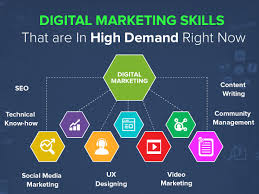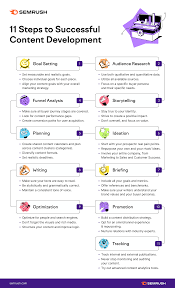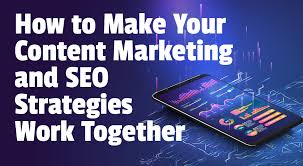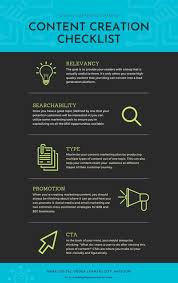Digital marketing has become an essential component of modern business strategy. As consumers increasingly turn to the internet for information and entertainment, businesses must adapt their marketing efforts to reach them where they are. One crucial aspect of digital marketing is content creation.
Content is the foundation of any successful digital marketing campaign. It includes everything from blog posts and social media updates to videos and infographics. Effective content should be informative, engaging, and relevant to the target audience. It should also align with the business’s overall goals and brand message.
One significant advantage of digital marketing content is its ability to reach a vast audience at a relatively low cost. Traditional advertising methods such as print ads and billboards can be expensive and have limited reach. In contrast, digital content can be shared across multiple platforms, increasing its visibility and potential impact.
Another benefit of digital marketing content is its ability to build trust and credibility with consumers. By providing valuable information that solves problems or answers questions, businesses can position themselves as thought leaders in their industry. This can lead to increased brand loyalty and customer retention.
However, creating effective digital marketing content requires more than just writing a blog post or filming a video. It requires a strategic approach that considers the target audience’s needs, preferences, and behaviors. It also requires ongoing analysis and optimization to ensure that the content continues to resonate with the audience over time.
To create successful digital marketing content, businesses must first identify their target audience’s pain points and interests. They should then develop a content plan that addresses these issues while also aligning with their brand message and goals. This plan should include a mix of formats such as blog posts, social media updates, videos, webinars, podcasts, etc.
Once the content plan is in place, it’s essential to track its performance regularly. This includes monitoring engagement metrics such as clicks, likes, shares, comments, etc., as well as conversion metrics such as leads generated or sales made. Based on this data, businesses can adjust their content strategy to optimize its effectiveness.
In conclusion, digital marketing content is a critical component of any successful digital marketing campaign. It has the potential to reach a vast audience at a relatively low cost while also building trust and credibility with consumers. However, creating effective content requires a strategic approach that considers the target audience’s needs and behaviors and ongoing analysis and optimization. By investing in quality digital marketing content, businesses can position themselves for long-term success in the digital age.
9 FAQs About Creating and Optimizing Digital Marketing Content
- What is the best way to create effective digital marketing content?
- How can I measure my digital marketing content’s success?
- How can I optimize my digital marketing content for SEO?
- What are the most effective types of digital marketing content?
- How often should I post new digital marketing content?
- What tools can I use to create and manage my digital marketing content?
- How can I use social media to promote my digital marketing content?
- How do I ensure that my digital marketing content is engaging and relevant to my audience?
- What strategies should I use to make sure that people see and share my digital marketing content?
What is the best way to create effective digital marketing content?
There are several key steps to creating effective digital marketing content:
- Define your target audience: The first step to creating effective digital marketing content is to understand who you’re trying to reach. Identify your target audience’s demographics, interests, pain points, and behaviors.
- Develop a content strategy: Based on your target audience’s needs and preferences, develop a content plan that aligns with your overall business goals and brand message. This plan should include a mix of formats such as blog posts, social media updates, videos, webinars, podcasts, etc.
- Use storytelling techniques: Storytelling is a powerful way to engage your audience and create an emotional connection with them. Use storytelling techniques such as anecdotes, metaphors, and examples to make your content more relatable and memorable.
- Provide value: Effective digital marketing content should provide value to the reader or viewer. This could be in the form of educational information, helpful tips or advice or entertaining content that resonates with them.
- Optimize for SEO: Search engine optimization (SEO) is critical for ensuring that your digital marketing content gets found by the right people at the right time. Use relevant keywords in your headlines and throughout your content to improve its search engine ranking.
- Promote on multiple channels: Once you’ve created quality digital marketing content, it’s important to promote it across multiple channels such as social media platforms or email campaigns to reach a wider audience.
- Analyze performance regularly: Finally, track the performance of your digital marketing content regularly using metrics such as engagement rates or conversion rates. Based on this data, adjust your strategy accordingly for optimal results.
By following these steps and consistently creating high-quality digital marketing content that resonates with your target audience, you can build trust and credibility with consumers while driving business growth over time.
How can I measure my digital marketing content’s success?
Measuring the success of your digital marketing content is crucial to understanding its impact on your business and making informed decisions about future content strategies. Here are some key metrics to consider when measuring the success of your digital marketing content:
- Engagement Metrics: These metrics measure how users interact with your content, such as likes, shares, comments, and clicks. A high level of engagement indicates that your content is resonating with your target audience.
- Conversion Metrics: These metrics measure how many users take a specific action after engaging with your content, such as filling out a form or making a purchase. A high conversion rate indicates that your content is effectively driving user behavior.
- Traffic Metrics: These metrics measure the number of users visiting your website or social media pages after engaging with your content. An increase in traffic indicates that your content is generating interest in your brand.
- Brand Awareness Metrics: These metrics measure how well-known and recognizable your brand is among consumers. This includes metrics such as social media followers, website traffic from branded searches, and mentions in online conversations.
- Customer Retention Metrics: These metrics measure how well your digital marketing content is retaining existing customers by encouraging repeat purchases or increasing their loyalty to your brand.
It’s essential to track these metrics regularly and analyze them over time to identify trends and make informed decisions about future content strategies. Additionally, it’s crucial to align these metrics with specific business goals to ensure that you are measuring the right things.
In conclusion, measuring the success of digital marketing content requires a comprehensive approach that considers engagement, conversion, traffic, brand awareness, and customer retention metrics aligned with specific business goals. By tracking these metrics regularly and analyzing them over time, you can make informed decisions about future content strategies that drive results for your business.
How can I optimize my digital marketing content for SEO?
Optimizing your digital marketing content for SEO is crucial to ensure that it is visible to your target audience. Here are some tips to help you optimize your content for search engines:
- Conduct keyword research: Keyword research is the process of identifying the keywords and phrases that your target audience uses to search for information related to your business. Use tools like Google Keyword Planner, SEMrush, or Ahrefs to identify relevant keywords.
- Use keywords strategically: Once you have identified relevant keywords, use them strategically in your content. Include them in the title, meta description, headers, and throughout the content naturally.
- Optimize images: Images can also be optimized for SEO by using descriptive filenames and alt tags that include relevant keywords.
- Write high-quality content: Search engines prioritize high-quality content that provides value to users. Ensure that your content is well-written and informative.
- Use internal linking: Internal linking helps search engines understand the structure of your website and how pages are related to each other. Linking between related pages on your website can help improve SEO.
- Optimize meta descriptions: Meta descriptions appear below the title tag in search engine results pages (SERPs). Ensure that they accurately describe the page’s content and include relevant keywords.
- Monitor performance: Use tools like Google Analytics or SEMrush to monitor how well your content is performing in terms of traffic, engagement, and conversions.
By following these tips, you can optimize your digital marketing content for SEO and improve its visibility in search engine results pages (SERPs). Remember that SEO is an ongoing process, so it’s essential to continually monitor and adjust your strategy as needed.
What are the most effective types of digital marketing content?
The effectiveness of digital marketing content depends on various factors such as the target audience, industry, and business goals. However, some types of content tend to perform better than others in terms of engagement and conversion rates. Here are some of the most effective types of digital marketing content:
- Blog Posts: Blogging is an excellent way to provide informative and engaging content that can attract and retain website visitors. Well-written blog posts can also help improve search engine rankings and drive traffic to a website.
- Social Media Updates: Social media platforms such as Facebook, Twitter, Instagram, and LinkedIn provide an opportunity for businesses to connect with their audience in a more personal way. Short-form updates, images, videos, and infographics are all effective ways to engage with followers on social media.
- Videos: Videos are becoming increasingly popular as a medium for digital marketing content due to their high engagement rates. They can be used for product demonstrations, tutorials, customer testimonials or even brand storytelling.
- Infographics: Infographics are visual representations of data or information that make complex topics easy to understand at a glance. They are highly shareable on social media platforms and can help drive traffic back to a website.
- E-books/Whitepapers: E-books and whitepapers are longer-form pieces of content that provide in-depth information on a particular topic or issue. They are often used as lead magnets in exchange for contact information from potential customers.
- Webinars/Podcasts: Webinars and podcasts allow businesses to connect with their audience in real-time through live broadcasts or recorded sessions. They can be used for product demonstrations, training sessions or even thought leadership discussions.
Ultimately, the most effective type of digital marketing content will depend on the business’s goals and target audience’s preferences. It’s essential to experiment with different types of content formats to determine what works best for your business’s specific needs and objectives.
How often should I post new digital marketing content?
The frequency of posting new digital marketing content depends on various factors, such as the type of content, the target audience, and the goals of your digital marketing strategy. However, as a general rule, it’s recommended to post new content regularly to keep your audience engaged and interested in your brand.
For blog posts, a frequency of at least once a week is ideal. This ensures that your blog remains active and relevant while also providing valuable information to your readers. However, if you have the resources to publish more frequently without sacrificing quality, you can consider posting more often.
Social media platforms have different optimal posting frequencies. For Twitter, it’s recommended to post at least 3-5 times per day due to its fast-paced nature. For Facebook and LinkedIn, posting once or twice per day is sufficient. Instagram and Pinterest are more visual platforms where quality is prioritized over quantity. Posting 1-2 high-quality images or videos per day can be effective.
For email marketing campaigns, the frequency depends on the type of emails you send and your audience’s preferences. If you send newsletters with curated content or promotional offers, a frequency of once a week or twice a month can be effective. If you send automated emails triggered by user behavior (such as abandoned cart reminders), the frequency should be based on the trigger event.
In summary, there is no one-size-fits-all answer when it comes to how often you should post new digital marketing content. It’s essential to consider your target audience’s preferences and behavior while also balancing quality with quantity. Regularly analyzing engagement metrics can help you determine whether your current posting frequency is effective or needs adjustment.
What tools can I use to create and manage my digital marketing content?
There are several tools available to create and manage digital marketing content. Here are some of the most popular ones:
- Content Management Systems (CMS): A CMS is a software application that allows you to create, edit, and publish digital content. Popular CMS platforms include WordPress, Drupal, and Joomla.
- Social Media Management Tools: These tools help you manage your social media accounts by scheduling posts, monitoring mentions and engagement, and analyzing performance metrics. Popular social media management tools include Hootsuite, Buffer, and Sprout Social.
- Email Marketing Platforms: These platforms allow you to create and send email campaigns to your subscribers. They also provide analytics on open rates, click-through rates, and other engagement metrics. Popular email marketing platforms include Mailchimp, Constant Contact, and Campaign Monitor.
- Graphic Design Tools: These tools help you create visual content such as images, infographics, and videos for your digital marketing campaigns. Popular graphic design tools include Canva, Adobe Creative Cloud, PicMonkey.
- SEO Tools: These tools help you optimize your website’s content for search engines by providing keyword research data, analyzing your website’s performance metrics like traffic sources or page speed load time etc.. Popular SEO tools include SEMrush Ahrefs or Google Analytics.
- Project Management Tools: These tools help you organize your team’s workflow by assigning tasks and deadlines for content creation projects. Popular project management tools include Trello, Asana or Basecamp.
By using these digital marketing content creation and management tools effectively in combination with a well-planned strategy can help businesses streamline their processes while maximizing the effectiveness of their digital marketing efforts.
How can I use social media to promote my digital marketing content?
Social media is an excellent tool for promoting digital marketing content. Here are some tips to help you use social media to promote your content effectively:
- Choose the right platforms: Not all social media platforms are created equal. Different platforms have different audiences and formats, so it’s essential to choose the ones that align with your target audience and content type. For example, if your content is visual, Instagram or Pinterest may be more effective than Twitter.
- Optimize your profiles: Make sure your social media profiles are complete and optimized for search engines. Use relevant keywords in your bio and include links to your website and other social media accounts.
- Share consistently: Consistency is key when it comes to social media. Develop a schedule for sharing your content on each platform, taking into account the best times to post for maximum engagement.
- Use visuals: Social media users are more likely to engage with posts that include visuals such as images, videos, or infographics. Use high-quality visuals that align with your brand message and content type.
- Engage with followers: Social media is a two-way conversation, so make sure you’re engaging with followers who comment on or share your posts. Responding to comments and messages shows that you value their input and can help build relationships.
- Use hashtags: Hashtags can help increase the visibility of your posts by making them discoverable by users searching for specific topics or keywords related to your content.
- Collaborate with influencers: Influencer marketing can be an effective way to reach new audiences on social media. Identify influencers in your industry who align with your brand message and collaborate with them on sponsored posts or partnerships.
By following these tips, you can use social media effectively to promote your digital marketing content and reach a wider audience online. Remember that consistency, quality visuals, engagement, and collaboration are essential components of any successful social media strategy!
How do I ensure that my digital marketing content is engaging and relevant to my audience?
Ensuring that your digital marketing content is engaging and relevant to your audience is crucial to the success of your marketing efforts. Here are some tips to help you create content that resonates with your target audience:
- Know your audience: Before creating any content, it’s essential to understand who your target audience is, what their needs and pain points are, and what type of content they prefer. Conducting market research or analyzing customer data can help you gain insights into your audience’s preferences.
- Use a variety of formats: Different people prefer different types of content. Some may prefer reading blog posts, while others may prefer watching videos or listening to podcasts. Using a variety of formats can help you reach a broader audience and keep them engaged.
- Provide value: Your content should provide value to your audience by addressing their pain points, answering their questions, or solving their problems. By providing value, you can build trust and credibility with your audience.
- Use storytelling: People love stories, and using storytelling in your content can make it more engaging and memorable. Use anecdotes or case studies to illustrate how your product or service has helped others.
- Optimize for search engines: Optimizing your content for search engines can help increase its visibility and reach a wider audience. Use relevant keywords in your headlines, subheadings, and body copy.
- Keep it concise: Attention spans are short online, so it’s essential to keep your content concise and easy to read or watch. Use short paragraphs, bullet points, or visuals to break up long blocks of text.
- Incorporate visuals: Visuals such as images or videos can make your content more engaging and memorable. Use high-quality visuals that are relevant to the topic at hand.
By following these tips, you can create digital marketing content that is engaging and relevant to your target audience, helping you achieve better results from your marketing efforts in the long run.
What strategies should I use to make sure that people see and share my digital marketing content?
There are several strategies you can use to ensure that your digital marketing content is seen and shared by your target audience:
- Optimize your content for search engines: Search engine optimization (SEO) can help your content rank higher in search engine results pages, making it more visible to potential customers. Use relevant keywords, meta descriptions, and alt tags to optimize your content for search engines.
- Promote your content on social media: Social media platforms are great for promoting digital marketing content. Share your content on all relevant social media channels and encourage others to share it as well.
- Use email marketing: Email marketing is an effective way to promote your digital marketing content to a targeted audience. Send newsletters or promotional emails with links to your content.
- Collaborate with influencers: Influencers have large followings on social media and can help promote your digital marketing content to a wider audience. Reach out to influencers in your industry and collaborate with them on sponsored posts or other promotions.
- Use paid advertising: Paid advertising can help increase the visibility of your digital marketing content by targeting specific audiences on social media or search engines.
- Make it shareable: Make sure that your digital marketing content is easy to share by adding social sharing buttons or encouraging readers/viewers/listeners to share it with their networks.
- Monitor performance and adjust accordingly: Regularly monitor the performance of your digital marketing content using analytics tools such as Google Analytics or social media insights. Use this data to adjust and improve future campaigns.
By implementing these strategies, you can increase the visibility and shareability of your digital marketing content, ultimately leading to increased engagement and conversions from potential customers.




